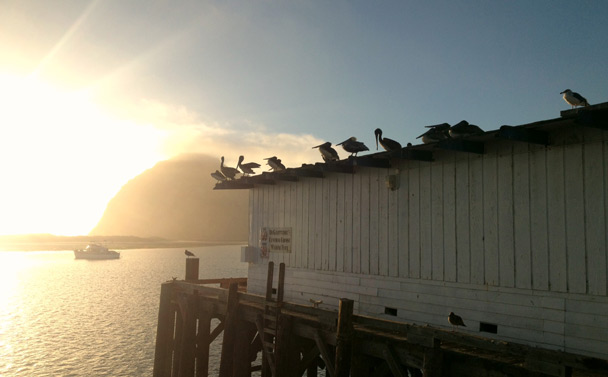Trippin on the Pacific Coast Highway
Guest contributor Sam Mickell loses his soul along the Big Sur.
Guest contributor Sam Mickell shares his epic soul searching experience, taking on one of the world's most respected highways in his Jucy Rental vehicle. Photos by Sam Mickell.
It inspired some of last century's best writers, its therapeutic environment helped rehabilitate some of Hollywood’s leading actors, and its solace has nurtured some of the most prolific thinkers, non-conformists and philosophers of our times. It was a catalyst in the hippy movement, and helped introduce meditation to the West. They call it Big Sur.
Big Sur is situated on California’s Pacific Coast Highway, between Los Angeles and San Francisco. Widely acclaimed as one of the world’s greatest road trips, I’m curious to experience whether this journey lives up to its hype, and I’m hoping for some quiet reflection along the way.
Also known as Route 1, the PCH trails almost the entire coastal flank of California, starting just above San Diego and ending just south of Washington State in the north.
Near LAX I stopped in at Jucy Rental’s LAX office to collect a Campa – their customised minivan designed to sleep and cater to four people. It even has a fridge, gas burner and sink so I can eat my away up the coast.
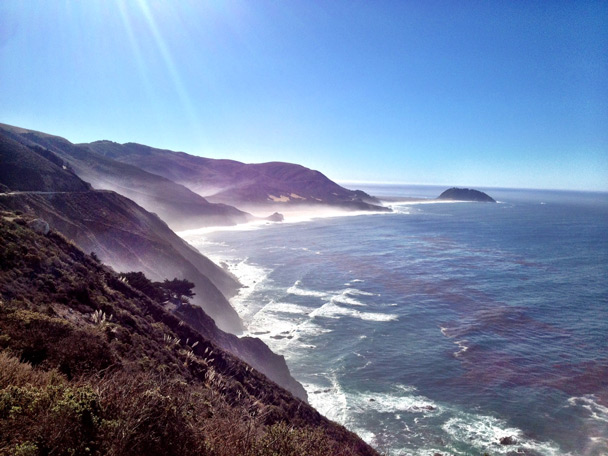
I start in Los Angeles’ Venice beach, enduring traffic jams until I reach Malibu, the hippy surf colony turned chic seaside retreat, where congested traffic eases into the highway I will trail almost 800km until San Francisco.
Summer has run late this year and it’s hot, in the unabashed way that Southern California does best. Skies of unrestrained blue and an emerald Pacific Ocean frame the road I often have to myself, aside from honeymooners in Mustang convertibles, silver-bearded Harley riders and the occasional truck.
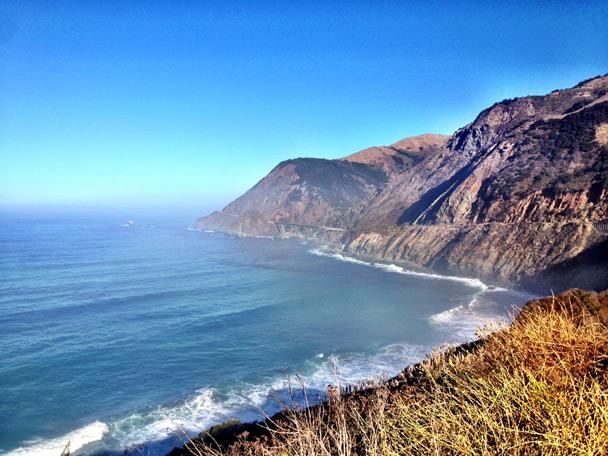
For the first few hours the highway scissors between trademark Californian golden beaches and inland past the mega-farms which feed California’s huge economy – the world’s ninth largest in its own right.
I pass through some notable stops such as Santa Barbara – which I had visited during a past life living in Los Angeles – to spend as much time at Big Sur as possible in my short window.
A few hours later I stop at the waterside town of Morro Bay. Morro Bay is a paradox not uncommon in some parts of America – a rich environment juxtaposed with offensively placed industry. This particular monstrosity – an enormous beachside power plant - was erected in the 1950’s to create jobs and attract residents, but I wonder if its gross placement caused people to leave after the job was done.
These days Morro Bay is mainly a tourist town, and touring its back streets the town’s struggle in the depths of a recession is as apparent as its working class character.

The wildlife here is curiously resilient – seals and pelicans thrive in its estuary. And like any true Californian seaside town, there are resident great white sharks. A local tells me about two attacks this summer already, and somehow I get the feeling he is sizing me up as healthy sized bait for a hat trick.
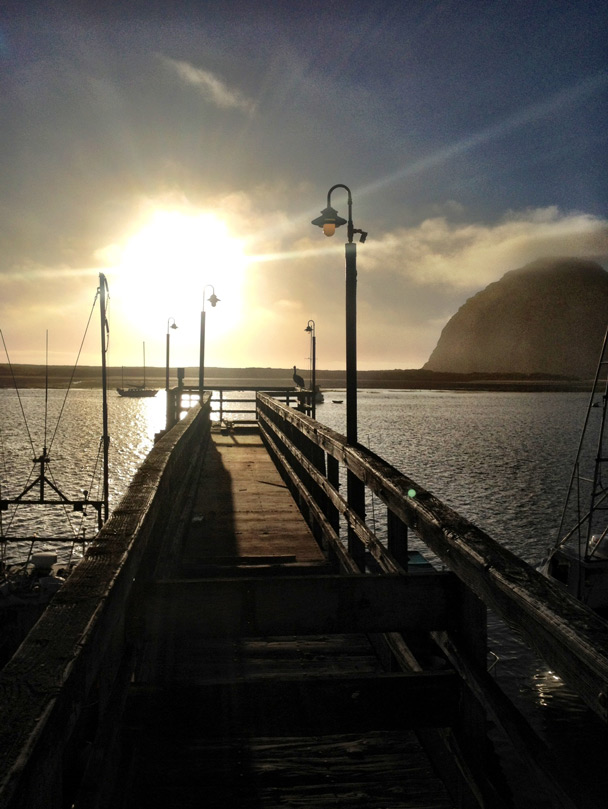
My towel thrown back into the Campa, I’m blistering down the highway, racing a dropping sun and hungry for my first view of Big Sur – the piece de resistance of this coastline. Big Sur is a bold headland that rises steeply from the ocean, the start of 150km of dramatic coastline, featuring mountain ranges with pockets of redwoods, and white sand beaches littered only with the occasional waterfall.
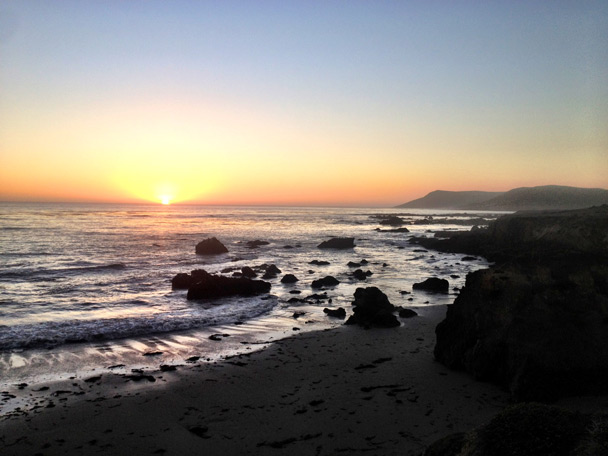
I stop at a nature reserve some 70kms before Big Sur for my first view. Immediately it is arrestingly, unreasonably beautiful. The scale and mystery is immense even from a distance; its allure magnetic. It’s hard to imagine one is only five hours drive from Hollywood. Big Sur’s environment is right up there as far as California goes. Kelp blankets untouched bays, only disrupted by the mischievous seal population playing in the rolling sets of waves. Alongside abundant marine life, Big Sur’s interior has thriving populations of species as diverse as cougars (although not of the LA variety), rattlesnakes, and condors.

Artists, writers, and non-conformists alike have found solace and inspiration in these parts. Kerouac, Hunter S Thompson, Orson Welles and Henry Miller all spent time here absorbing the mystery and creative inspiration its solitude and scale inspires. Jack Kerouac published an autobiographical novel, Big Sur, based on the near mental break down he suffered at the region’s isolation.
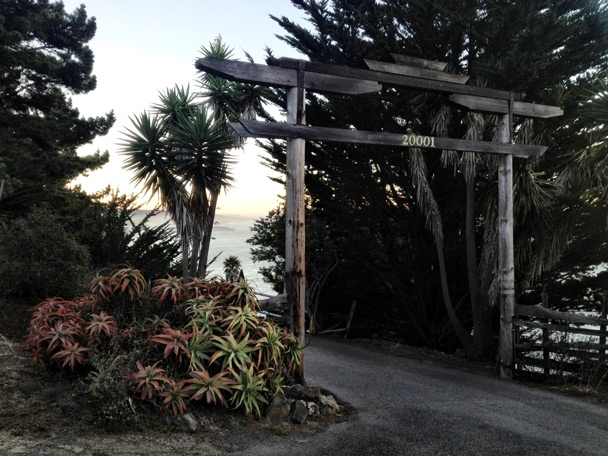
Big Sur also found itself at the fulcrum of the Hippy movement. Its famous Esalen Institute – a retreat centre established in the sixties – was at the centre of the Western search for enlightenment. Experimentations with LSD and primal scream therapy were some of the alternative healing practices it experimented with.
Back on the road with a clear mind, I think wiser of driving the climbing cliff side roads in the dark. I pull over at a small community called Ragged Point to park up for the night, one of many spots you can easily overnight in a Campa. True to its name, Ragged Point sits on the edge of a steep and uncompromising cliff. I cook dinner on the gas hob and raise the electronic roof to make a hybrid tent, complete with built in fan and double bed. I must make a strange sight, and two sixty something locals wander over for a closer look. Friendliness and openness is hallmark of Californians, and we end up shooting the breeze over beers from my fridge. They make for interesting conversation, and want to hire a Campa for Burning Man next year, the psychedelic weeklong festival held in the Nevada desert each September. The bed turns out to be very comfortable, and after a good night’s sleep I’m up at 6AM looking to find somewhere scenic to cook breakfast before I start the next leg through to San Francisco.
Leaving Ragged Point I drive head-on into the tapestry of mist that buffers these majestic lands from the crashing ocean, and find a cliff-side spot for breakfast overlooking some large surf. The smell of bacon lures some surfers over for a closer look at the vehicle, and we compare the Campa to their school-bus sized RV.

After a kaleidoscope of beaches, hikes and small towns I reach the Bay Area and reluctantly return my vehicle to Jucy’s San Francisco base. I feel the pang of regret for not allowing more time, but the stirring of excitement at more adventures to come in this vast state.
JUCY Campa’s start from USD $35 per night and are available from their depots in Los Angeles, San Francisco and Las Vegas.
[sponsored post]

